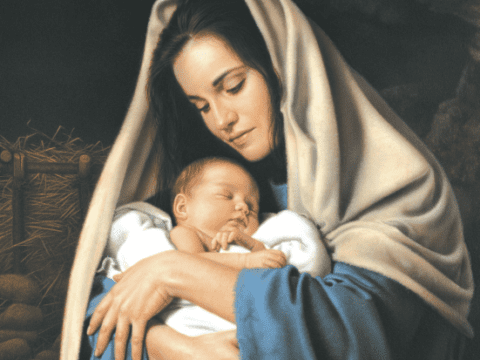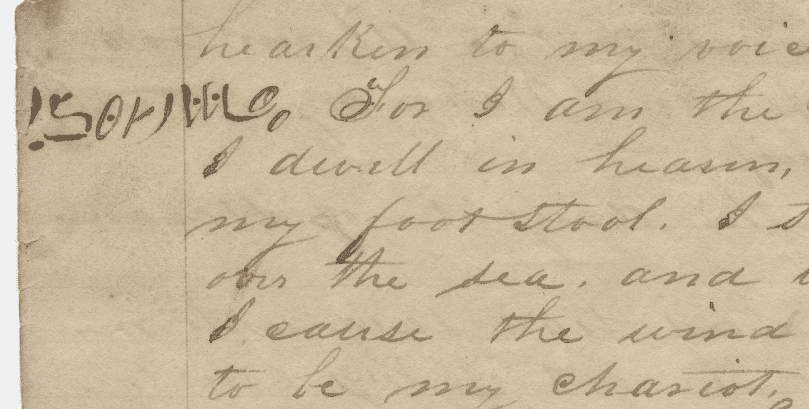Having raised the issue of linguistics and Book of Mormon evidence in my last post, let me point to an intriguing recent presentation with some weighty discoveries relevant to the much-derided Nephite system of “coinage” in Alma 11. His presentation on “The Preposterous Book of Mormon” A Singular Advantage” is available on Youtube (see below) and the PDF is at FAIRMormon.org. I learned about his paper after reading a valuable comment from Brother Smith in William Hamblin’s intriguing blog post at The Interpreter, “Palestinian Hieratic.” Interesting tidbits of ancient language and archaeology are transforming one of the most ridiculed weaknesses of the Book of Mormon into surprising strength, an ironic twist which has become rather repetitious in the past few decades.
Let me know what you think. Or should I say, a senine or seon for your thoughts?
Update: Brother Smith makes a brief reference to an apparent error in the current Book of Mormon in which the measure known as a shiblum actually should be shilum. It’s a significant issue, actually. Here’s something I wrote on this issue last year:
The name Shiblon is also a unit of weight (not coinage!) in
the Book of Mormon, according to Alma 11:15. This name may be related
to a Jaredite king’s name, Shiblom, one of a number of Jaredite names
that crop in Nephite culture, consistent with the persistence of
Jaredite influence among the later Nephites, (e.g., Corianton, Noah,
Korihor/Corihor, and Nehor). There is also a Nephite unit of weight
called a shiblon, “for a half measure of barley.” According to the entry for Shiblon in the online Book of Mormon Onomasticon, a terrific resource to explore possible meanings and connections for Book of Mormon names, this usage of shiblon might derive from Hebrew šibbolet, “ear
of grain.”
LDS folks have long assumed shiblon was related to the next unit of weight mentioned in Alma 11:16, the shiblum.
But the detective work of Royal Skousen leading the Critical Text of
the Book of Mormon shows that what Joseph dictated in his translation
was actually shilum, and that is what the Yale Edition of the Book of Mormon now has. The Book of Mormon Onomasticon’s entry for shiblum explains what happened:
SHIBLUM has been the reading in Alma 11:16, 17 since the 1830 edition. It was written down as SHIBLUM in the original manuscript by Oliver Cowdery (probably based on the reading of the word SHIBLON in Alma 11:15, 16. O [the original manuscript] was then corrected by him to SHILLUM by overwriting the b with an l. Then (possibly with the assistance of Joseph Smith) he crossed off the overwritten l to produce SHILUM. In the printer’s manuscript it appears only as SHILUM. The 1830 typesetter erroneously set shiblum (in what is now verse 16), which it has remained through the current edition of the Book of Mormon. In verse 17 both O and P [the printer’s manuscript] have only shilum, but the typesetter repeated the mistake of verse 16 by setting shiblum, the reading in 1830-2013.[1] While the derivation of shiblum from ancient HEBREW is somewhat problematical, shilum is not. Its derivation from the HEBREW shillum, “reward, payment, compensation” is found in Micah 7:3 in the context of bribing judges.[2] According to Hoftijzer, in Northwest Semitic inscriptions slm has the meaning “to be paid, repaid.”[3]
References:
- Royal Skousen, Analysis of Textual Variants of the Book of Mormon. vol. 3. (Provo, UT: FARMS, 2004), 1810-11.
- Ludwig Koehler and Walter Baumgartner, eds. The Hebrew & Aramaic Lexicon of the Old Testament, vol. 4. (Leiden: Brill, 1995), 1511.
- Jacob Hoftijzer, Dictionary of North-west Semitic Inscriptions [Leiden: Brill, 1995], 2:1145.
If you don’t have Skousen’s Critical Text of the Book of Mormon, you might want
to mark your printed or electronic Book of Mormon in Alma 11 with a
note explaining that shiblum should be shilum, meaning “reward,
payment” in Hebrew. This is one of numerous examples of Hebraic
influence that Joseph probably could not have appreciated since he
didn’t study Hebrew until around 1835. Without the recent investigation
of Skousen into the original Book of Mormon text, it’s something we
probably would not appreciate today.












Two things that stood out to me:
Mr. Smith makes it a point to say that coinage or weights of value are not mentioned anywhere in the Bible. Why are they in the Book of Mormon? In a book that rails upon those who "seek to get gain," why mention anything related to money? It's an odd thing to do.
Second, why do we assume that Alma 11 is discussing weight? Weight isn't mentioned anywhere in the text, whereas money is:
"20 Now, it was for the sole purpose to get gain, because they received their wages according to their employ, therefore, they did stir up the people to riotings, and all manner of disturbances and wickedness, that they might have more employ, that they might get money"
Rates of exchange for different values of gold and silver are given and a measure of barley is provided as an afterthought (note the word measure, not weight) as in "this is how much food you can get with this much money." Not to mention that corn was the grain that would make the most sense for exchange–but that's a completely different argument.
Yeah, weight isn't mentioned but neither is volume. Measure "is a standard unit used to express the size, amount, or degree of something." In this case, measure could be either volume or weight.
I agree that the mention of the currency and the currency's value seems out of place but it is in there none the less.
Consider that in verse 22 we see Zeezrom trying to bribe Amuleck with six ontis of silver, the working out of the measure lets us know how big a bribe it is. By my calculations it comes out to 42 days (1 1/2 months) wages.
Now whether this was a great temptation or just insulting is left as an exercise for the reader.
22 And Amulek said unto him: Yea, if it be according to the Spirit of the Lord, which is in me; for I shall say nothing which is contrary to the Spirit of the Lord. And Zeezrom said unto him: Behold, here are six onties of silver, and all these will I give thee if thou wilt deny the existence of a Supreme Being.
Verse 22 is more evidence we are discussing coins and not weights. With all of the other "miraculous" things about the Book of Mormon, I'm not sure why apologists have this weight thing stuck in their craw. Why not just explain that it was how the Nephites reckoned money and that surely someday we will find out that some native peoples had a monetary system? This type of explanation seems to be acceptable for other anomalies.
"Verse 22 is more evidence we are discussing coins and not weights."
I don't think it follows. Substitute into the sentence a weight measure "Behold, here are six [pounds] of silver," and remember that the terms shekel and talent are weight measures and that the British 'Pound Stirling' used to be exactly that a pound of silver.
"Shekel (Akkadian: šiqlu or siqlu; Hebrew: שקל, pl. shekels or sheqalim) is any of several ancient units of weight or of currency. Initially, it may have referred to a weight of barley. This shekel was about 180 grains (11 grams or .35 troy ounces)." https://en.wikipedia.org/wiki/Shekel
"The pound was a unit of account in Anglo-Saxon England, equal to 240 silver pennies and equivalent to one pound weight of silver."
https://en.wikipedia.org/wiki/Pound_sterling#History